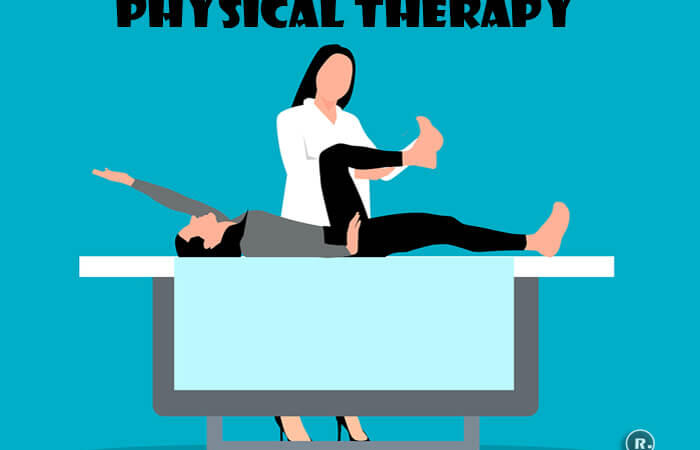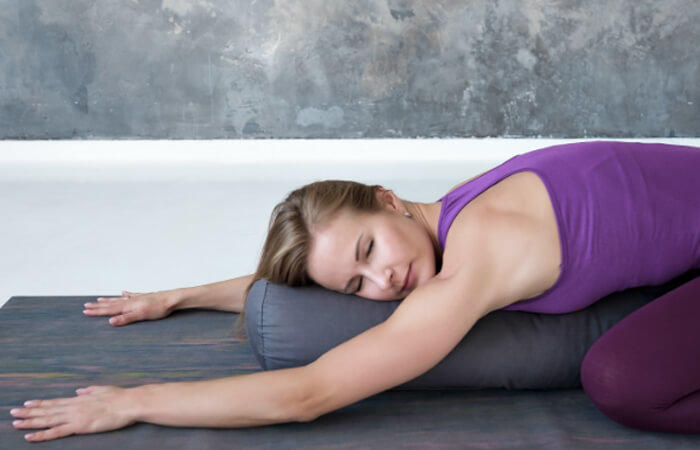Yoga – The Art of Relaxation

“The soul that moves in the world of the senses and yet keeps the senses in harmony… finds rest in quietness.” Bhagavad Gita
Yoga’s incorporation of meditation and breathing can help improve a person’s mental well-being. “Regular yoga practice creates mental clarity and calmness; increases body awareness; relieves chronic stress patterns; relaxes the mind; centers attention, and sharpens concentration.”
Aside from the physical benefits, one of the best benefits of yoga is how it helps a person manage stress, which is known to have devastating effects on the body and mind. “Stress can reveal itself in many ways, including back or neck pain, sleeping problems, headaches, drug abuse, and an inability to concentrate. Yoga can be very effective in developing coping skills and reaching a more positive outlook on life.”
In this section, we present the technique of relaxation, which is an essential part of your yoga practice. There are three parts to proper relaxation – physical, mental, and spiritual relaxation. To relax the body, you lie down in the Corpse Pose and first tense then relax each part of the body in turn, working from up your feet to your head. This alternate tensing then relaxing is necessary because it is only by knowing how tension feels that you can be sure that you have achieved relaxation.
Then just as in normal life, your mind instructs the muscles to tense and contract, you now use autosuggestion to send the muscles a massage to relax. With practice, you will gradually learn to use your subconscious mind to extend this control to the involuntary muscles of the heart, the digestive systems, and other organs too.
The Corpse Pose

The Front Corpse Pose
Lie down on your front, legs slightly apart, toes touching, and allow your heels to fall out to the sides. Make a pillow with your hands. Lengthen the body, tense, and relax the muscles. Feel your body sinking into the floor as you exhale. Use this pose after any asana performed on the abdomen (such as the Cobra or Bow), alternating on which side you place your head.
The Back Corpse Pose
Lie on your back, feet spread about 18 inches apart, and hands about 6 inches from your sides, palms up. Ease yourself into the pose, making sure the body is symmetrical. Let your thighs, knees, and toes turn outward. Close your eyes and breathe deeply.
Abdominal Breathing
To check that you are breathing correctly, exhale, and place your hands on your abdomen, fingers loosely interlocked. When you inhale, your abdomen should rise up, separating your hands.
The Corpse Pose or Savasana is the classic relaxation pose, practiced before each, between asanas and in Final Relaxation (see further below). It looks deceptively simple, but it is, in fact, one of the most difficult asanas to do well and one which changes and develops with practice. At the end of an asana session, your Corpse Pose will be more complete than at the beginning because the other asanas will have progressively stretched and relaxed your muscles. When you first lie down, look to see that you are lying symmetrically as symmetry provides proper space for all parts to relax.
Now start to work in the pose. Rotate your legs in and out, then let them fall gently out to the sides. Do the same with your arms. Rotate the spine by turning your head from side to side to center it. Then start stretching yourself out, as though someone was pulling your head away from your feet, your shoulders down and away from your neck, your legs down and away from your pelvis. Let gravity embrace you. Feel your weight pulling you deeper into relaxation, melting your body into the floor. Breathe deeply and slowly from the abdomen, riding up and down on the breath, sinking deeper with each exhalation. Feel how your abdomen swells and falls. Many physiological changes are taking place, reducing the body’s energy loss, removing stress, lowering your respiration and pulse rate, and resting the whole system. As you enter deep relaxation, you will feel your mind grow clear and detached.
Final Relaxation (Savasana)

Your yoga practice will help you to be more in touch with your body, able to recognize tension and relaxation, and thus bring them under your conscious control. At the end of the session of asanas, you should spend at least ten minutes in Final Relaxation. During this time, you relax each part of the body in turn. But in order to experience relaxation, you must first experience tension. Working up from the feet, as shown below, you first tense and lift each part, then drop (but don’t place) it down. Now let your mind travel throughout the body, commanding each part to relax. Let yourself go. Sink deep into the quiet pool of the mind. To bring your consciousness back to your body, gently move your fingers and toes, take a deep breath and as you exhale, sit up.
Feet and legs
Lift your right foot just an inch off the floor. Tense the leg, hold, then let it drop. Repeat on the other side.
Hands and Arms
Raise your right hand an inch off the floor. Make a fist, tense the arm, then let it drop. Repeat on the other side. Relax.
Buttocks
Clench your buttocks tightly together, lift the hips a little way off the floor and hold. Relax and drop them down
Chest
Tense and lift up the back and chest, keeping your hips and head on the floor. Relax and drop them down.
Shoulders
Lift your shoulders and hunch them up tight around your neck. Let them drop, relaxed. Now pull each arm, in turn, down alongside the body, and relax.
Head
Tuck in your chin slightly and roll the head gently from side to side. Find a comfortable position in the center for the head to lie, and then relax.
Autosuggestion
After practicing the sequence shown, visualize your body in your mind’s eye, and repeat this simple formula mentally: “I relax the toes, I relax the toes. The toes are relaxed. I relax the calves, I relax the calves. The calves are relaxed.” Continue on up the body, applying the formula to each part of the way – the stomach, lungs, heart, jaw, scalp, brain, and soon. Feel a wave of relaxation rising up your body as you guide your awareness through each part. Each time you inhale, feel a wave of Oxygen flowing down to your feet; each time you exhale, feel the tension flowing out of your body, leaving your mind like a deep, still lake, without a ripple. Now dive deep into the center of this lake, deep within yourself, and experience your true nature.
This article was contributed by www.cyberastro.com.
Suggested Read: The Eight Limbs of Yoga






